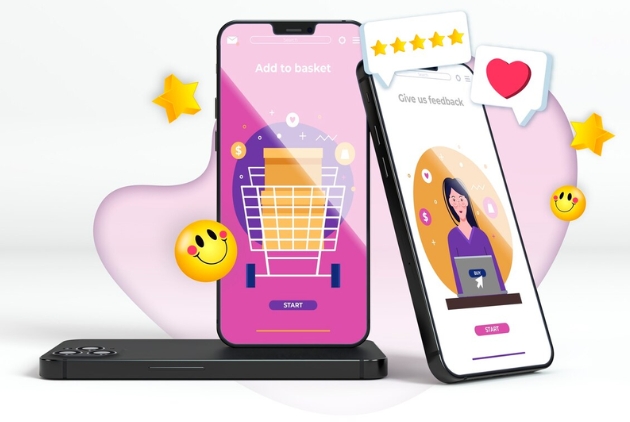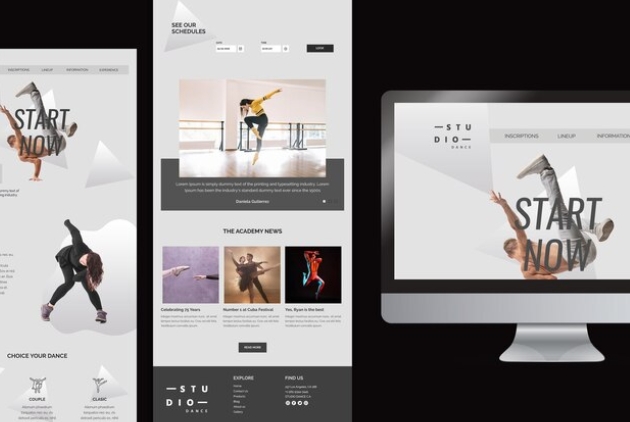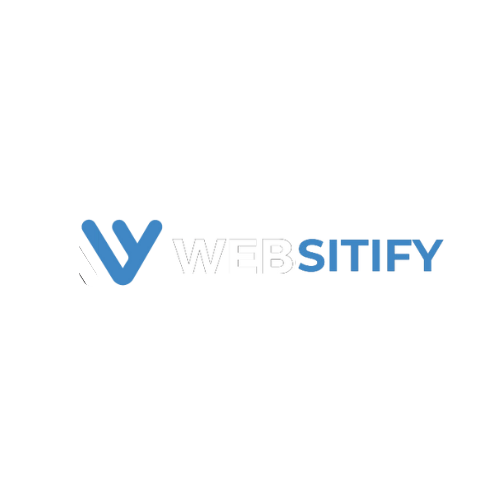
Ultimate guide to the many types of webpages
In this article, we'll explore the many types of web pages found across the internet. Complete with examples of web design and useful tips.
A webpage is a singular hypertext document accessible on the World Wide Web (www), constructed with HTML elements and viewed through browsers like Mozilla, Firefox, Chrome, and others. It is commonly known simply as a "page."
A webpage is a digital document accessible via the World Wide Web, viewable by anyone connected to the internet using a web browser.
Each webpage has a distinct URL, ensuring no duplicates. Users access it by entering its unique URL, loading its content on their browsers. Typically, webpages contain text, links, graphics, videos, and more, serving to inform users through various media formats.
What Is A Webpage?
A webpage is a component of a website, where a website consists of multiple web pages. For instance, javaTpoint.com is a website, and the page you're currently viewing is a webpage. This analogy can be likened to a book: a website is akin to a complete book, while a webpage is analogous to a single page of that book.
The World Wide Web (www) or Internet comprises millions of web pages, with new additions daily.
Tim Berners-Lee developed the first webpage.
Basic Terms Related to Webpage
Website: A website is a collection of multiple web pages interconnected through hyperlinks. Each website has a unique domain name, accessed by entering this domain name into the URL.
Search Engine: A search engine is an online service that helps users locate information available on the internet. Examples include Google, Yahoo, and Bing, accessible through web browsers.
Web Browser: A web browser, such as Google Chrome, Microsoft Internet Explorer, or Safari, is software used to access the internet. Its primary functions include connecting to web servers to request and display web pages, and interpreting HTML tags to render pages correctly.
Web Server: A web server is a computer hosting or providing websites on the internet. It runs web server software and stores components of a website, including HTML documents, images, CSS stylesheets, and JS files.
HTML: HTML stands for Hyper-Text Markup Language, a markup language specifying page formatting. It enables users to define fonts, colors, images, headings, and other content to display on a webpage as interpreted by web browsers.
Examples Of Web Page Types
Examples of common webpage types include:
Homepages: Website owners use their homepage as the primary hub of their site, offering essential information and navigation links to other pages.
Product Pages: eCommerce websites utilize product pages to showcase the merchandise or services they offer for sale.
About Us Pages: These pages provide insights into the mission, vision, and activities of a company or organization.
FAQ Pages: Frequently Asked Questions (FAQ) pages address common queries from visitors, offering support and information.
Landing Pages: Created for specific purposes like launching marketing campaigns or targeting localized audiences, landing pages serve focused objectives.
Components Of A Web Page
Key components of a web page include:
Title: The title appears in the browser's title bar and in search engine results, summarizing the page's content.
Headline: Positioned at the top, the headline establishes the brand and conveys key messaging.
Body: This section constitutes the main content of the page, presenting information and details.
Images: Images enhance visual appeal and support content, making it more engaging and informative.
Videos: Adding multimedia, videos provide additional dimensions to the page's content.
Links: Links connect to other web pages, establishing navigation and organizing the hierarchy within a website.
Characteristics of a Web Page
Here are some key characteristics of a web page:
A simple webpage can be created in no time.
- Creating a webpage takes significantly less time compared to developing a full website.
- Web pages and websites should be compatible with any device, such as mobile phones, desktops, laptops, etc.
- Search engines provide web pages through links, and when a user clicks on a link, they are redirected to the respective webpage.
- A webpage can contain various types of information, including text, images, videos, and audio.
- Web pages can be built using HTML (Hypertext Markup Language) and enhanced with CSS or JavaScript for dynamic and visually appealing features.
Difference between a Webpage and a Website
While websites and web pages are closely related, they are distinct entities.
A webpage is a single web document, whereas a website is a collection of interconnected web pages.
A website, such as Javatpoint.com or Amazon.com, contains multiple web pages linked together through hyperlinks and is accessed via its domain name without any extension in the URL. In contrast, a webpage is a single hypertext document accessed through a unique URL with an extension.
Creating a website requires more skills and time compared to developing a webpage, which can be done quickly with basic HTML knowledge.
A website can encompass diverse information across various entities, while a webpage typically focuses on a single topic.
Examples of web pages include the contact page, registration page, and home page of a website.
Crafting a comprehensive website involves complex programming, whereas creating an individual webpage is relatively simple.
How Does a Web Page Work?
A basic web page is built using HTML, a markup language. Additionally, CSS and JavaScript can be incorporated to enhance functionality and aesthetics. HTML employs various markup tags to dictate the formatting of data on the screen.
The webpage is hosted on a web server. To access this webpage, a client, typically a web browser, sends a request to the server.
When a web browser requests a page on the internet, it sends an HTTP request to the server. HTTP, or Hypertext Transfer Protocol, is a network protocol that facilitates the transfer of hypermedia documents between a browser and a server.
Upon receiving the request, the HTTP server processes it, locates the requested page, and sends it back to the browser as an HTTP response. If the server cannot locate the requested page, it returns a 404 error. The browser then interprets the markup tags and correctly displays the content on the user's screen.
3 Main Types Of Web Pages
Web pages can generally be categorized into three main types:
1. Static Pages: These pages are built using basic HTML and display only formatted text.
2. Dynamic Pages: These pages incorporate elements like CSS, Flash, and other technologies to create animations and interactive content.
3. Client-Server Functional Pages: These pages offer full dynamic capabilities and facilitate interaction with server-side applications written in languages such as PHP, Angular, NodeJs, and others.
In the early development of dynamic pages, JavaScript code was embedded directly into the pages to add interactivity (distinct from the Java programming language).
Basic Types Of Web Pages
Homepage - The homepage is the strategic starting point of a website, introducing users to key areas and navigation options. It often includes a search field, onboarding features, welcome messages, and links to important sections, guiding users on their journey.
Feed Page - A feed page displays frequently updated content in a scrollable stream. Content blocks are similar and repetitive, varying from minimalist text to complex multimedia elements. Examples include news articles on editorial sites or updates from followed users on social networks.
Menu Page - A menu page focuses on navigation, listing content categories and interaction zones. While not always necessary for simple sites, it directs user attention without distractions and supports a minimalist design for other pages.
Search Page - A search page displays internal search results, varying from simple lists to image-rich blocks. Key requirements include scannable layouts and readable headings. Keeping the search query visible helps users verify their input and refine results efficiently.
About Page - An About page provides a quick overview of a company, product, or individual, enhancing branding by highlighting benefits. Often found in the website header or footer, it offers visitors a concise brand introduction and essential information.
Registration Page - A registration page allows users to create personalized accounts. It should be simple, with minimal steps and fields. Offer multiple registration methods, including social network logins, and consider onboarding for first-time visitors to ensure a smooth experience.
404 Page - A 404 page informs users that the requested content is unavailable, typically due to a broken or dead link. Modern 404 pages often feature creative designs, guiding users to other pages and enhancing brand promotion while alleviating frustration.
Blog Page - A blog is a website offering information or discussions on specific topics. Bloggers share posts, creating content for personal or professional themes, inviting reader interaction. Blogs can cover daily life or specialized subjects, functioning as online journals or diaries.
Article Page - An article page displays full articles on blogs, news platforms, or educational sites. Design it for easy skimming using eye-tracking patterns and visual hierarchy. Prominent headlines and distinguishable H1 and H2 headings help visitors prioritize and navigate content quickly.
Portfolio Page - A portfolio page showcases visual content like photography, designs, or handmade goods for professional presentation. Found on professional platforms or personal websites, it aims to impress customers with high-quality images and creative presentation to highlight projects effectively.
Services Page - A services page introduces professionals and their offerings to potential clients. It focuses on clear, concise descriptions using bullet points and visuals like images, illustrations, or icons to enhance readability and emotional appeal, ensuring easy scanning and quick understanding.
Product Page - A product page on e-commerce sites provides essential details, photos, options, reviews, and buying options like adding to cart or wish list. Design for clarity, functionality, and readability, ensuring prominent call-to-action buttons for a seamless user experience and conversion.
Cart Page - The cart page in e-commerce platforms displays saved items with pictures and basic details, facilitating easy checkout completion. It ensures users can review their selections without navigating back to individual product pages, streamlining the buying process.
Statistics Page - A statistics page on user accounts displays data through charts, numbers, and tables for easy analysis. Familiar patterns like using red for negative and green for positive changes reduce cognitive load and enhance user-friendly data perception.
Contacts Page - A contacts page is essential for reaching support or website owners. Keep it simple, fast-loading, informative, and functional. Often includes contact details and a form for direct messages, ensuring ease of use without unnecessary design elements.
Landing Page - A landing page is a focused web page designed for specific goals, guiding visitors directly to relevant content or actions. Originally from web analytics, it now emphasizes narrow objectives for effective user engagement and marketing strategies.
This article would have helped you understand the various aspects of web pages. For further assistance in website building for an attractive online presence and business profitability, get in touch.


